Story tellers
"In the beginning there was no earth or land. There was nothing except salt water. This covered everything like a big sea. Two brothers lived under this water. The oldest one was Teaipakomat.
When the elder brother saw that there was nothing, he made first of all little red ants. They filled the water up thick with their bodies and so made land. Then Teaipakomat caused certain black birds with flat bills to come into being. There was no sun or light when he made these birds. So they were lost and could not find their roost. So Teaipakomat took three kinds of clay, red, yellow, and black, and made a round, flat object. This he took in his hand and threw up against the sky. It stuck there. It began to give a dim light. We call it the moon now.
The light was so poor that they could not see very far. So Teaipakomat was not satisfied, for he had it in mind to make people. He took some more clay and made another round, flat object and tossed that up against the other side of the sky. It also stuck there. It made everything light. It is the Sun. Then he took a light-colored piece of clay, and split it up part way. He made a man of it. That is the way he made man. Then he took a rib from the man and made a woman, the first Woman. The children of this man and this woman were people, Ipai.
They lived in the east at a great mountain called Wikami. If you go there now you will hear all kinds of singing in all languages. If you put your ear to the ground you will hear the sound of dancing. This is caused by the spirits of all the dead people, who go back there when they die and dance just as they do here. That is the place where everything was created first."
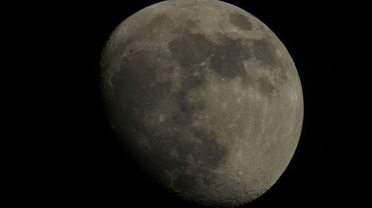 "It began to give a dim light. We call it the moon now."
"It began to give a dim light. We call it the moon now." 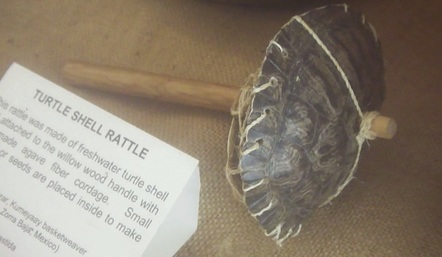 Native turtle shell rattle, excavated from the former village of Meti, now Spring Valley.
Native turtle shell rattle, excavated from the former village of Meti, now Spring Valley. "The Indians who swarmed about the bay of San Diego were, apparently, as poor material as ever came to the social mill. All the early observers, except the missionaries, spoke of them with contempt."
"No one ever called the San Diego Indian 'the noble red man', for he was neither noble nor red, but a covetous, thievish, and sneaking creature, of a brownish complexion, something like the soil. There were no orators among them and, it is to be feared, very few brave men, for when they fought they acted like a pack of cowards."
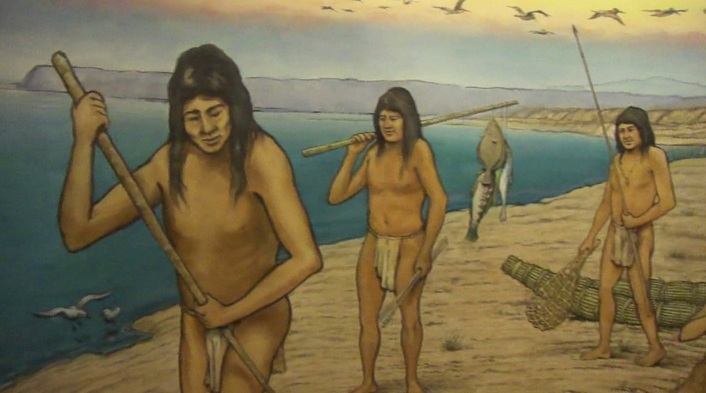
The way they lived
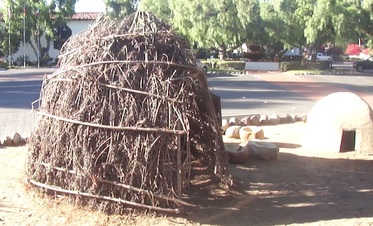 Native homes were mainly grass huts. This one can be found at the former Village of Nipaguay, now the site of the San Diego Mission.
Native homes were mainly grass huts. This one can be found at the former Village of Nipaguay, now the site of the San Diego Mission. 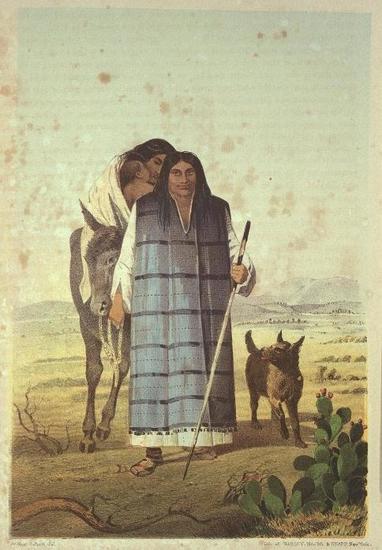 An illustration of Native Americans in San Diego. - cdlib.org
An illustration of Native Americans in San Diego. - cdlib.org Sources:
http://www.sandiegohistory.org/books/smythe/1-3.htm
Kumeyaay Creation Story in full:
http://www.kumeyaay.com/kumeyaay-history.html?id=80:kumeyaay-creation-story&catid=1
Kumeyaay History:
http://www.kumeyaay.info/history/
http://viejasbandofkumeyaay.org/wp-content/uploads/2014/10/ViejasHistoryBooklet.pdf
http://www.kumeyaay.com/kumeyaay-history/1-timeline.html
http://www.pbs.org/video/2365254548/
You can also visit:
Barona Cultural Center and Museum in the Barona Reservation
San Diego Museum of Man in Balboa Park
McCoy House in Old Town
Cabrillo National Monument in Point Loma
San Diego Mission in Mission Valley
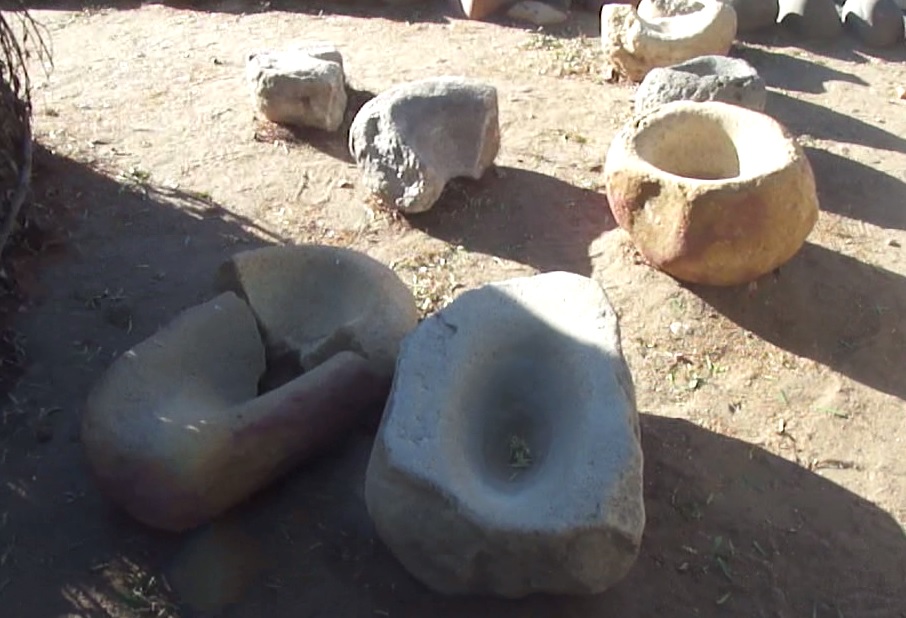
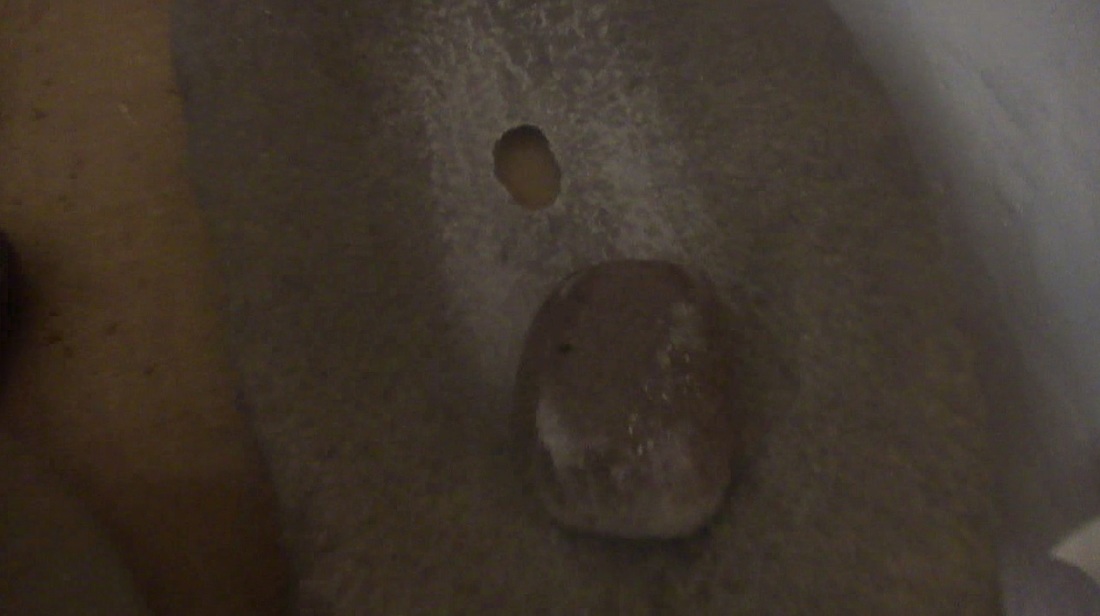
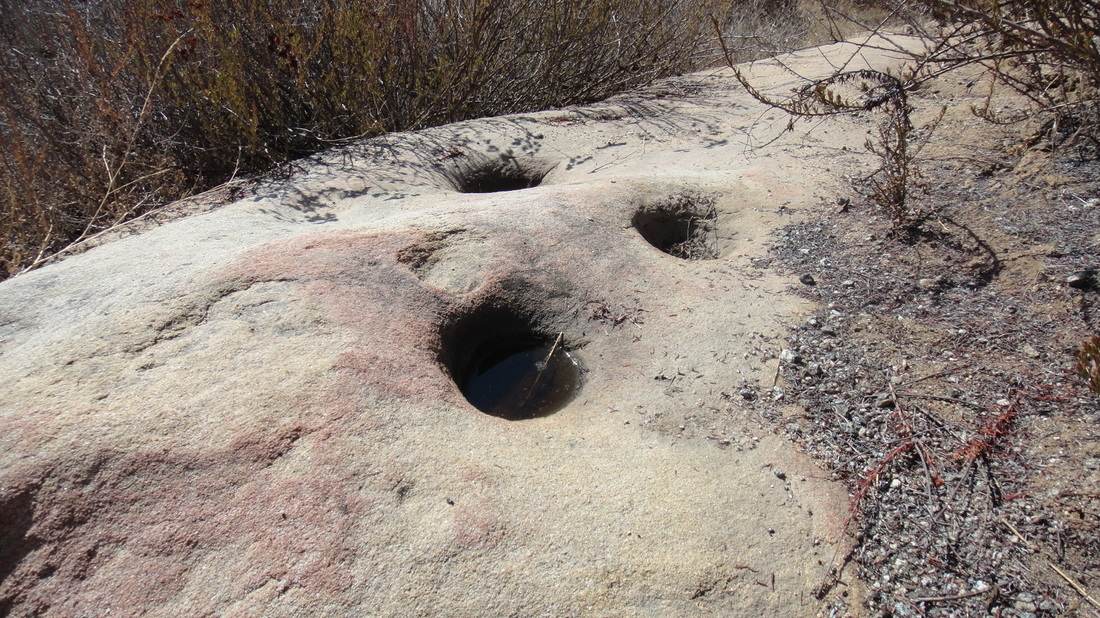
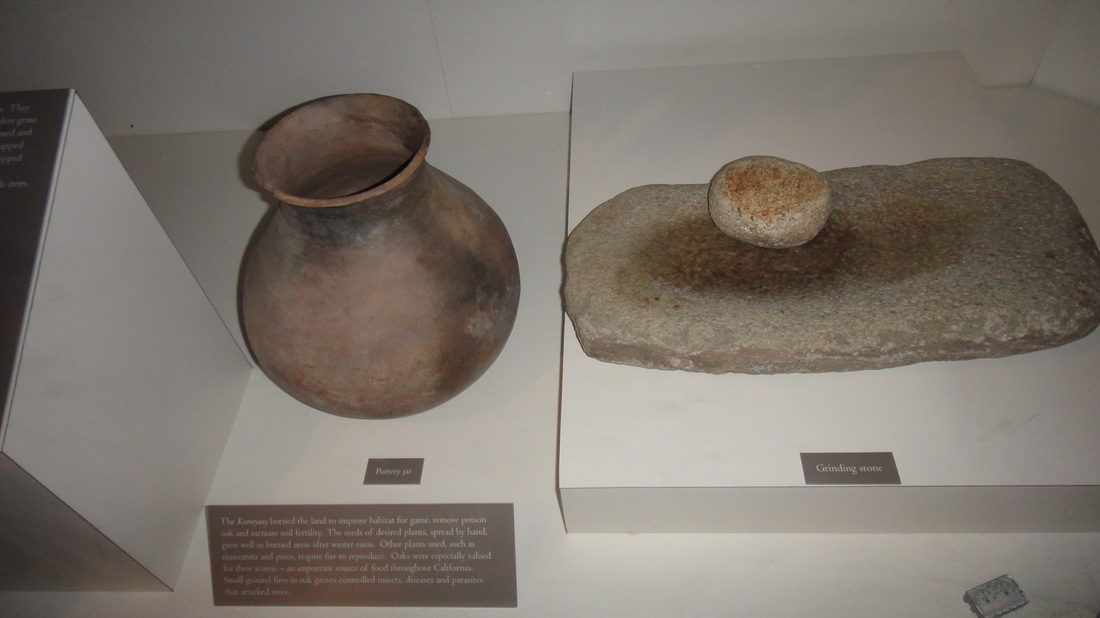
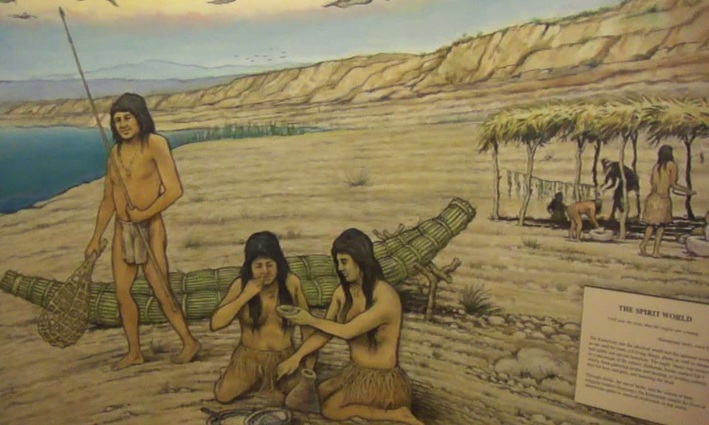
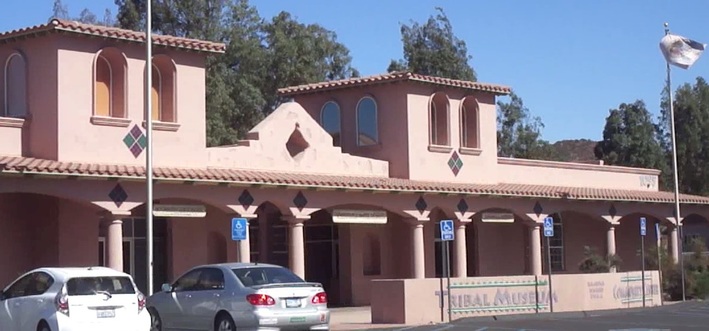
 RSS Feed
RSS Feed